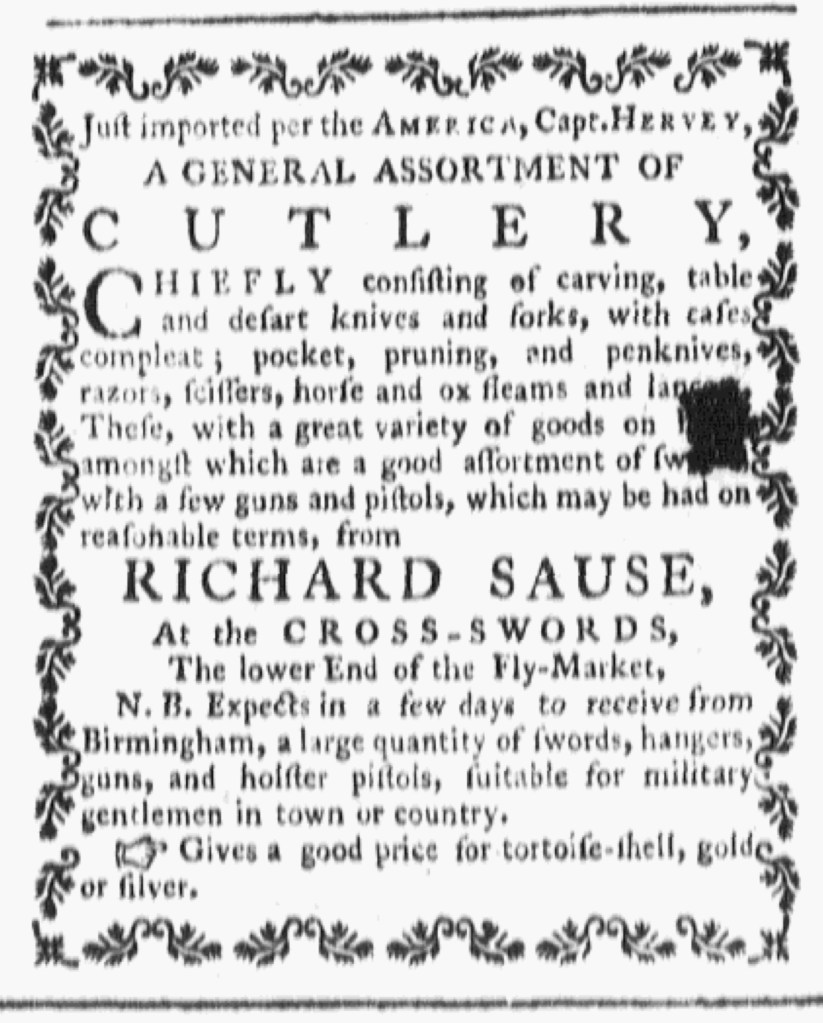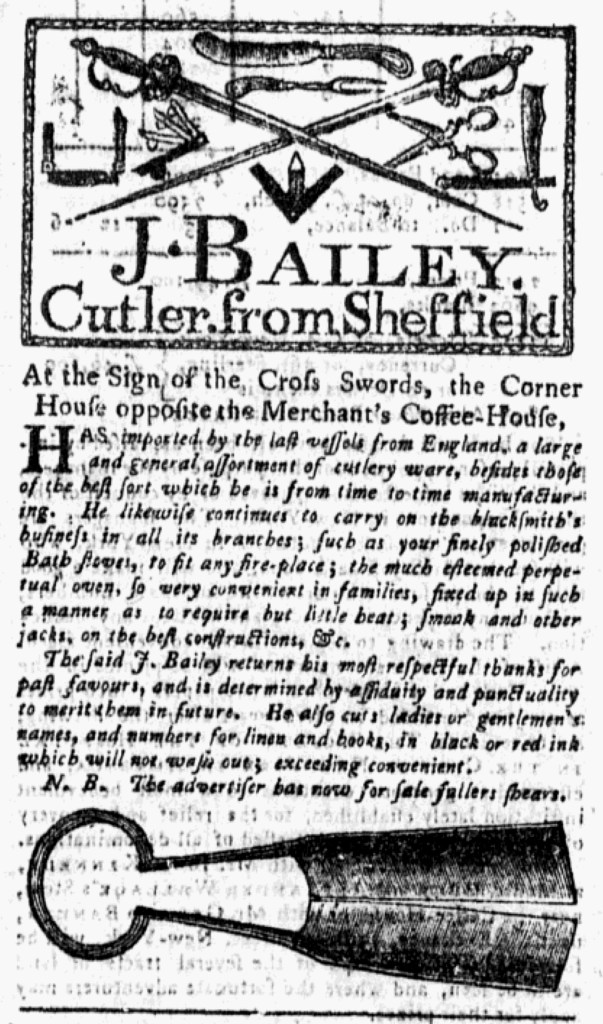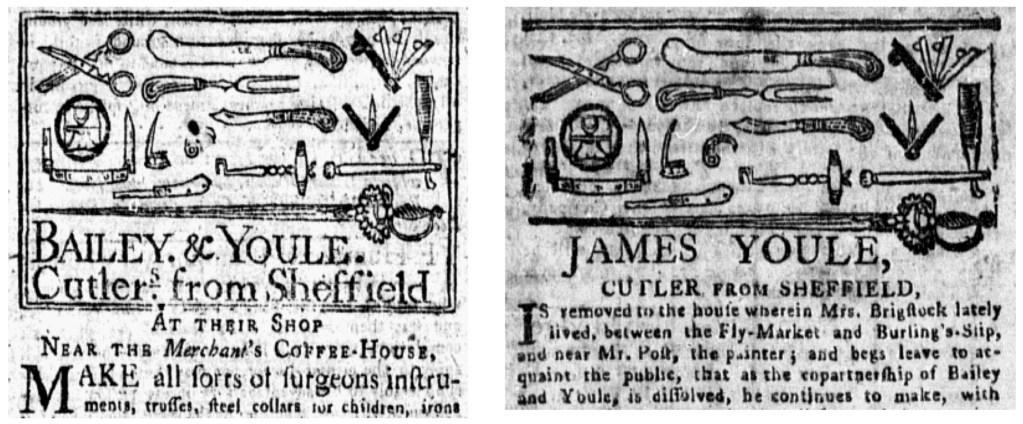What was advertised in a colonial American newspaper 250 years ago today?

“A large assortment of goods.”
In its first six months of publication, Rivington’s New-York Gazetteer developed a signature style for many of its advertisements. They featured the same copy that appeared in other newspapers published in the city, yet surrounded by borders made of decorative type. James Rivington and the compositors who worked in his printing office certainly were not the first to devise borders for newspaper notices. After all, borders enclosed Jolley Allen’s advertisements in several Boston newspapers going back years and the shopkeeper continued to incorporate that design element into his advertisements in the early 1770s (in every newspaper except the Massachusetts Spy, which seemed hesitant to accommodate that request). Borders occasionally surrounded advertisements in other newspapers as well, but in no newspaper did they appear as frequently as in Rivington’s New-York Gazetteer.
In the fall of 1773, Richard Sause, a cutler “At the CROSS SWORDS,” joined the ranks of advertisers with borders around their advertisements. Several notices in the November 4 edition had borders, including those places buy John Arthur, a shopkeeper, John Laboyteaux, a tailor, John J. Roosevelt, a merchant, and John Siemon, a furrier. Borders also enclosed advertisements for “SHIP BREAD” sold by Crommelin and Horsfield and Rivington’s own notice for “Dr. KEYSER’s PILLS.” The compositor selected different printing ornaments for each advertisement, making them distinctive even though they shared a common feature.
The copy for Sause’s advertisement matched his notice on the front page of the November 1 edition of the New-York Gazette and Weekly Mercury. An extensive list of merchandise, divided into two columns with one or two items per line, appeared below a headline and brief introduction that promised a “large assortment of goods, which he will sell cheap for cash or short credit.” Sause’s advertisement filled three-quarters of a column in Rivington’s New-York Gazetteer, making it the longest advertisement with a border in that issue. Yet Sause did not need to experiment with a border as a means of drawing attention to his advertisement. Like Siemon, he previously ran advertisements with a woodcut depicting some aspect of his business. For the furrier, it was a muff. For Sause, it was a sign that showed many of the items that he made and sold, including a table knife with “SAUSE” at the base of the blade and a sword with “SAUSE” in the same position.” The sign depicted on the woodcut even included his name and occupation, “RD. SAUSE CUTLER,” making it one of the few woodcuts personalized in such a manner. That image appeared in Sause’s advertisement in Rivington’s New-York Gazetteer on April 29, only the second issue of that newspaper. Six months later, however, Rivington opted for the decorative border rather than the woodcut. The increasingly popular style apparently made an impact on the advertiser, convincing him to give it a try in his own marketing in hopes that it would have a similar effect on prospective customers.




